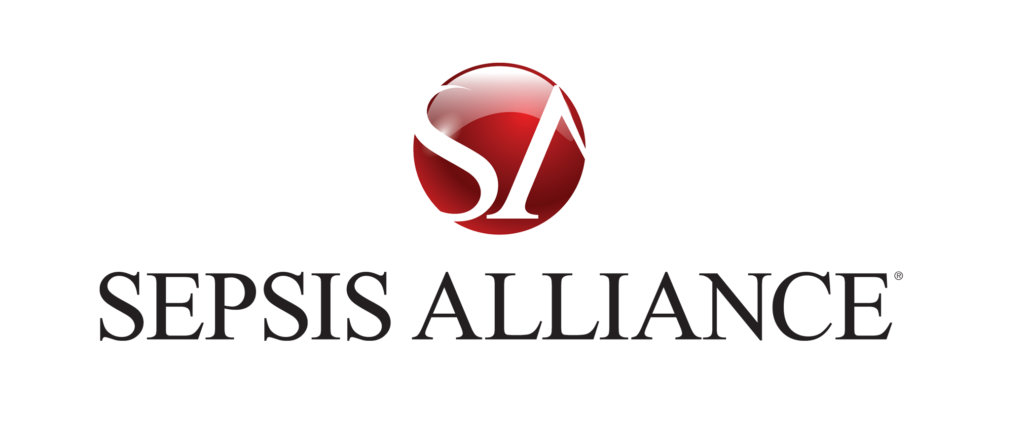Raising Awareness of Sepsis, One Community at a Time
Sepsis Alliance’s Story
What follows is an interview with Karin Molander, MD, FACEP. Dr. Molander is an emergency medicine physician who provides emergency care to patients in the community setting, analyzes quality of care and is passionate about patient education. Dr. Molander is a Board Member of Sepsis Alliance, the leading sepsis organization in the U.S. working in all 50 states to save lives and reduce suffering from sepsis. Sepsis Alliance is a charitable organization run by a dedicated team who share a strong commitment to battling sepsis. They joined the Coalition in April 2019.
What are the barriers to an accurate and timely diagnosis for sepsis patients?
“The biggest barrier to accurately diagnosing sepsis in a timely manner is awareness; most people still don’t know what it is,” said Karin Molander, MD, FACEP. “Sepsis is the number one killer in hospitals, and 80 percent of those cases begin in the community.”
Sepsis is twice as common—and deadly—as stroke. According to the Centers for Disease Control and Prevention, in the U.S. alone, 1.7 million people are diagnosed with sepsis each year, and 270,000 people die from the disease. That’s one death every two minutes, which is more yearly fatalities than breast cancer, prostate cancer, and AIDS combined.
“The second barrier to diagnosis is that medically, sepsis is nebulous—there is no simple blood test or diagnostic study that can immediately pinpoint it,” said Dr. Molander. “Accurately and quickly diagnosing someone with sepsis requires quite a bit of clinical acumen.”
To reach a sepsis diagnosis, clinicians must piece together different sources of information—patient history, potential sources of infection, vital signs, symptoms, etc.—which can take a considerable amount of time, something that sepsis patients usually don’t have.
What has Sepsis Alliance done to overcome these barriers?
“For every hour that a patient with sepsis goes without antibiotics due to a misdiagnosis or delayed diagnosis, his or her mortality rate goes up as much as eight percent,” said Dr. Molander. “Since time is of the essence with treatment, we knew that we needed to create a clever, easy way to educate communities on the signs, symptoms, and urgency.”
Sepsis: It’s About T.I.M.E™ is the Alliance’s public awareness campaign. T.I.M.E stands for (1) Temperature – Higher or lower than normal; (2) Infection – May have signs and symptoms of an infection; (3) Mental decline – Confused, sleepy, difficult to rouse; (4) Extremely ill – “I feel like I might die” severe pain or discomfort.
“When we first surveyed the public’s awareness of sepsis in 2007, only about 19 percent of people knew what it was,” said Dr. Molander. “Now, that number has jumped to about 65 percent, but there’s still much work to be done.”
What other tools or materials have you developed to increase awareness of sepsis?
“We have launched many initiatives to increase awareness: PSAs and billboards, a series of free webinars for sepsis care, a video for first responders called ‘Sepsis: First Response,’ Sepsis Awareness Month, and specific awareness weeks—like Pediatric Sepsis Week and Maternal Sepsis Week—all to help people understand signs and symptoms,” said Dr. Molander.
In May 2018, Sepsis Alliance formed the Sepsis Coordinator Network to provide best practices, resources, and guidance for sepsis coordinators and all health professionals across the country.
“We wanted to create an exchange of information across the U.S.,” said Dr. Molander. “In one year, we’ve grown to more than 1,700 member hospitals, representing more than 500,000 hospital beds.”
And this year, the Alliance is launching the Sepsis Alliance Institute to provide educational resources and diagnostic tools for healthcare professionals across the spectrum of care. “We realize how challenging sepsis education is because it is such a nebulous condition, but we hope this a major step in increasing provider awareness,” said Dr. Molander.
What advice might you give to other Coalition members who may be exploring similar initiatives?
“Always include patients in the work,” said Dr. Molander. “Sepsis Alliance began as a patient advocacy group, and we’ve stayed true to the belief that patients and families must be informed so that they can be included on the diagnostic and treatment team.”
Sepsis Alliance intentionally includes sepsis survivors on its board who can bring the critical patient perspective to the work. “Our Board Chair Steve Maupin is a sepsis survivor, as are other members of our board, like Amanda Breckenridge and Bill Gossman,” said Dr. Molander. “Many more of our board members’ families have also been impacted by sepsis, so their personal experiences help shape our work.”
Resources
- It’s About TIME™ is Sepsis Alliance’s national initiative to raise awareness of sepsis and the urgent need to seek treatment when symptoms are recognized. Visit the website to read more about the campaign, watch the PSA, or download the infographic or white paper.
- Sepsis Coordinator Network
- Sepsis Alliance Institute
- Sepsis: First Response teaching video for first responders
- Sepsis Webinars for Healthcare Professionals

Get ACT Update Delivered to Your Inbox
Want to see more content like this? Stay informed on that latest activities from members of the Coalition to Improve Diagnosis. Sign up for the ACT Update Newsletter.
